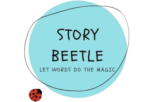
What does a story do for #scienceeducation ?
I feel it primes the mind to absorb.
Recently, I conducted a few “Science through Stories” sessions with children at Story Beetle.
The First session was about the science of “popcorn”.
I looked on the net for inspiration for a story – and found this myth about popcorns:
The folklore of some Native American tribes told of spirits who lived inside each kernel of popcorn. The spirits were quiet and content to live on their own, but grew angry if their houses were heated. The hotter their homes became, the angrier they would become, shaking the kernels until the heat was too much. Finally, they would burst out of their homes and into the air as a disgruntled puff of steam.
Well I did not want to scare the kids away – so I concocted a kid friendly story around it with prince and princesses, and their love of corn and how they bust this myth of the monster popcorn!
The story was a hit with the kids, they were all ears and glued until the end..and then came the real #Science behind it. They were very curious – what makes a popcorn pop, why a sweet corn does not pop, what is a kernel, the parts of the seed, and what makes it all pop! They absorbed the answers like a sponge.
Intrigued about the real science?
The reason why popcorn pops is the water trapped inside its kernel. If the kernel is heated to a high enough temperature, this water will transform into steam. Due to the hard and mostly nonporous shell, the steam has nowhere to go, resulting in a buildup of pressure inside the kernel. Once the pressure gets high enough and the temperature reaches about 180 degrees Celsius (355 degrees Fahrenheit), the kernel hull bursts and the popcorn is turned inside out. The characteristic popcorn consistency and white-yellowish foamy appearance results from the starch inside the popcorn kernel. With high temperatures, the starch gelatinizes and then expands with the rapid burst of the kernel. Once it cools down, the solidified flake we know as popcorn is formed. The characteristic popping sound does not originate from the cracking of the hull as originally thought but results from the vapor release after the kernel has cracked.
